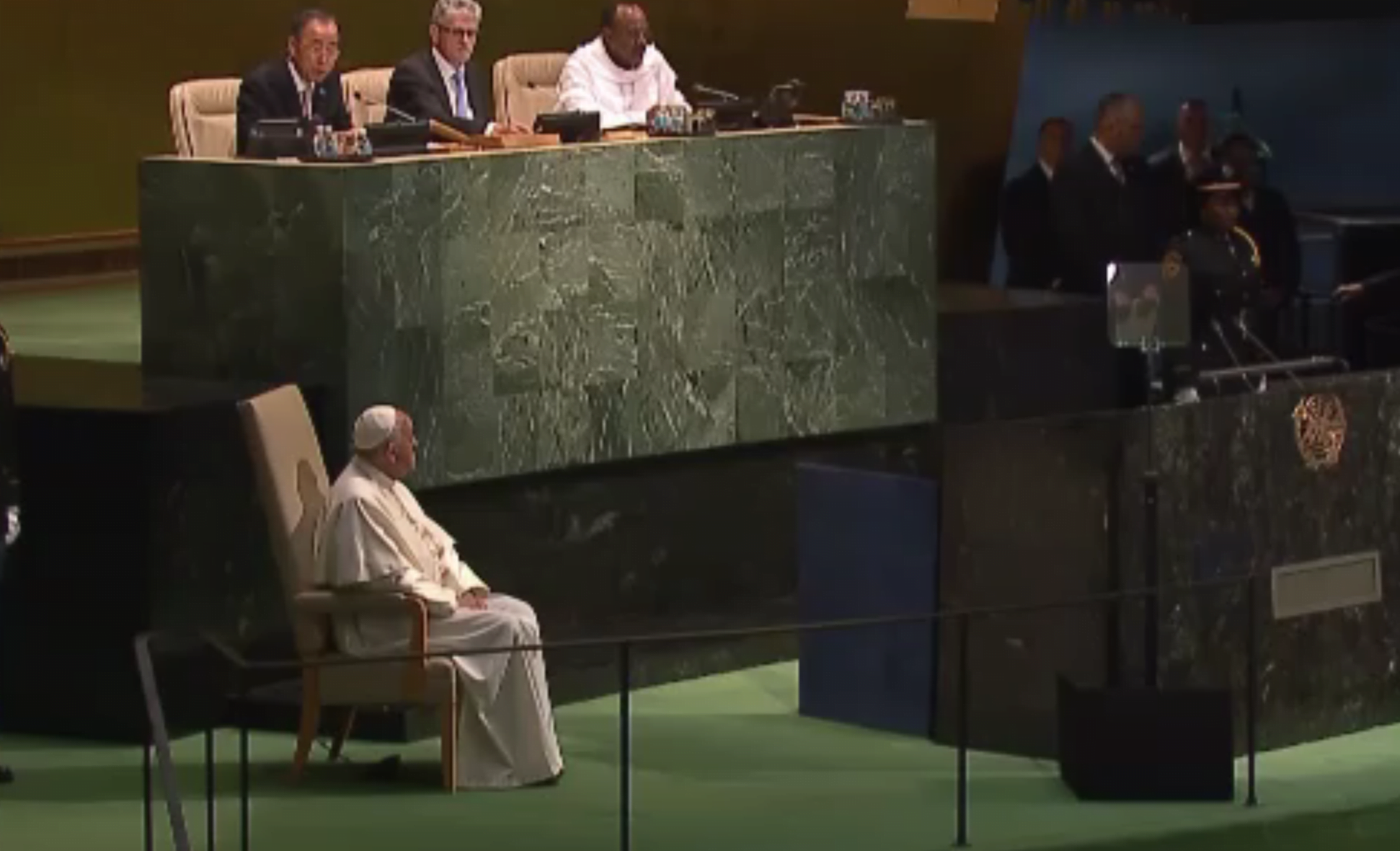The Pope’s address to the United Nations today is one of those moments where it’s useful to take a step back and understand his remarks not in the context of the day-to-day drumbeat of the news, but through a wider lens and longer term perspective.
The Pope comes to the United Nations today to kick off three days of speeches by heads of state and other dignitaries focused on one single over-arching goal: the total eradication of extreme poverty, as measured by people who live on less than $1.25 a day.
Right now, that figure is over 1 billion people. And getting to zero in just 15 years is the top target of the new Sustainable Development Goals, which this meeting of more than 150 presidents and prime ministers is formally endorsing. In all, there are 17 anti-poverty and pro-environment goals with 169 targets. These include eliminating preventable child mortality, sharply reducing maternal mortality, substantial increases in renewable energy use, universal access to clean water and sanitation, and an end to the epidemics of malaria and AIDS, among other things.
If achieved, life for most of the 8.5 billion people who inhabit the earth will be vastly improved. Millions more children will live to see their 5th birthday; millions more mothers will safely give birth to those children; AIDS and Malaria will be diseases easily managed; no one will go hungry; and the economic development required to propel these changes will not have come at the expense of the environment.


These are clearly hugely ambitious–some might say audacious goals. But they largely build on the success of the Millennium Development Goals, which back in 2000 seemed equally as elusive. 15 years ago, UN member states agreed to decrease by half the number of people who live in extreme poverty, using 1990 as a baseline figure. That goal was achieved in 2010, five years ahead of schedule.
The data are instructive. In 1990, nearly half of people in the developing world were living in extreme poverty. Today, that rate has decreased to 14%, and has been dropping at a rate of 1% per year for the last 30 years. This is despite the global economic slowdown of the late 2000s. If that trend continues, the goal of eradicating extreme poverty in 15 years time looks suddenly doable.
To be sure, the last people to be lifted out of poverty are going to be the hardest to reach. (And these will mostly be rural farmers in sub-saharan Africa.) But between advances in agriculture to promising new studies on the efficacy of direct transfer programs to big breakthroughs in infectious disease control, eradicating poverty is not out of the realm of plausibility.
These may seem like pie-in-the-sky dreams. But the fact is, these goals are actually achievable in 15 years time. It’s really just a matter of political will. That 150 heads of state personally endorsing these goals during this UN summit suggests that this will can be summoned.
